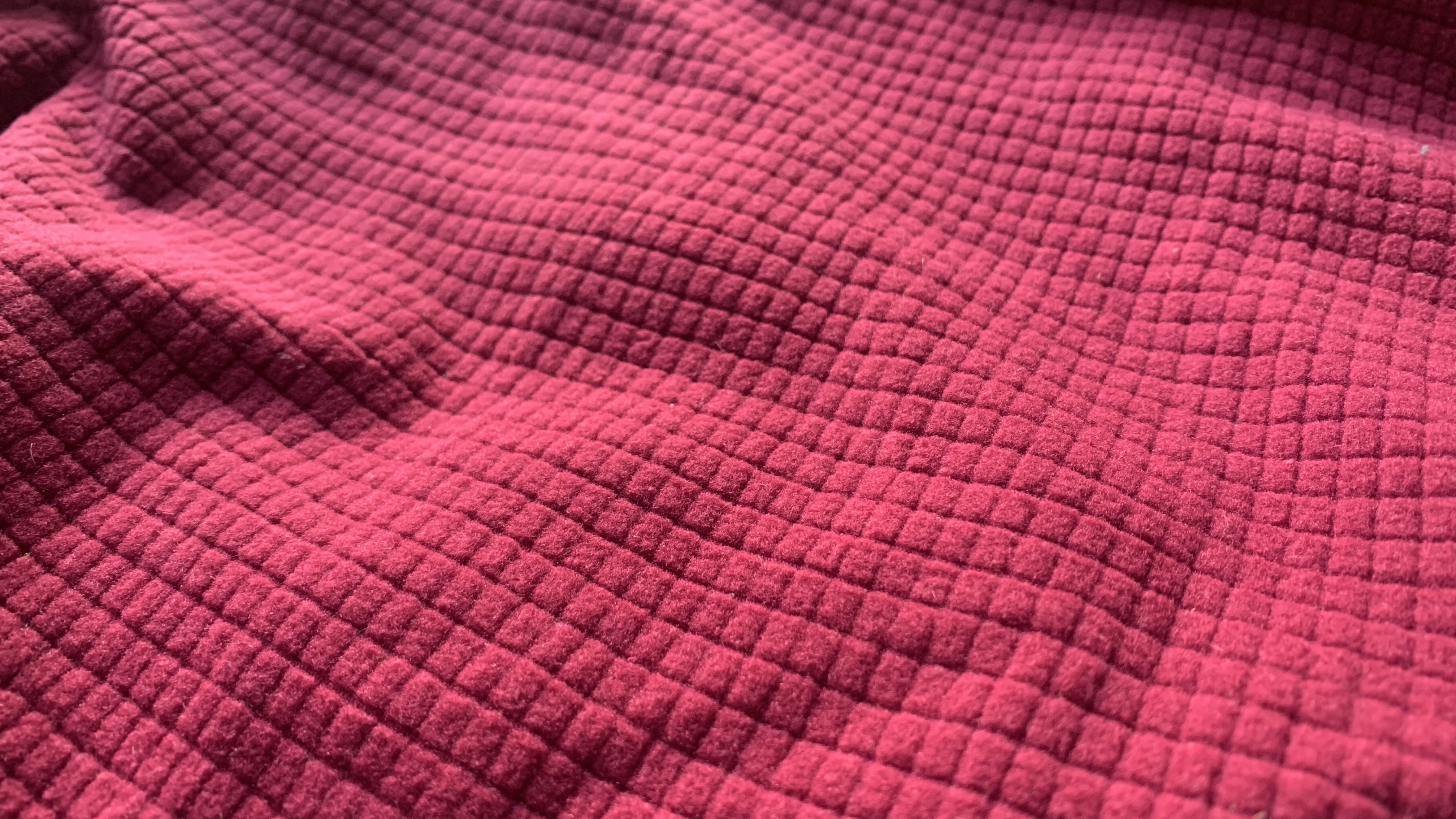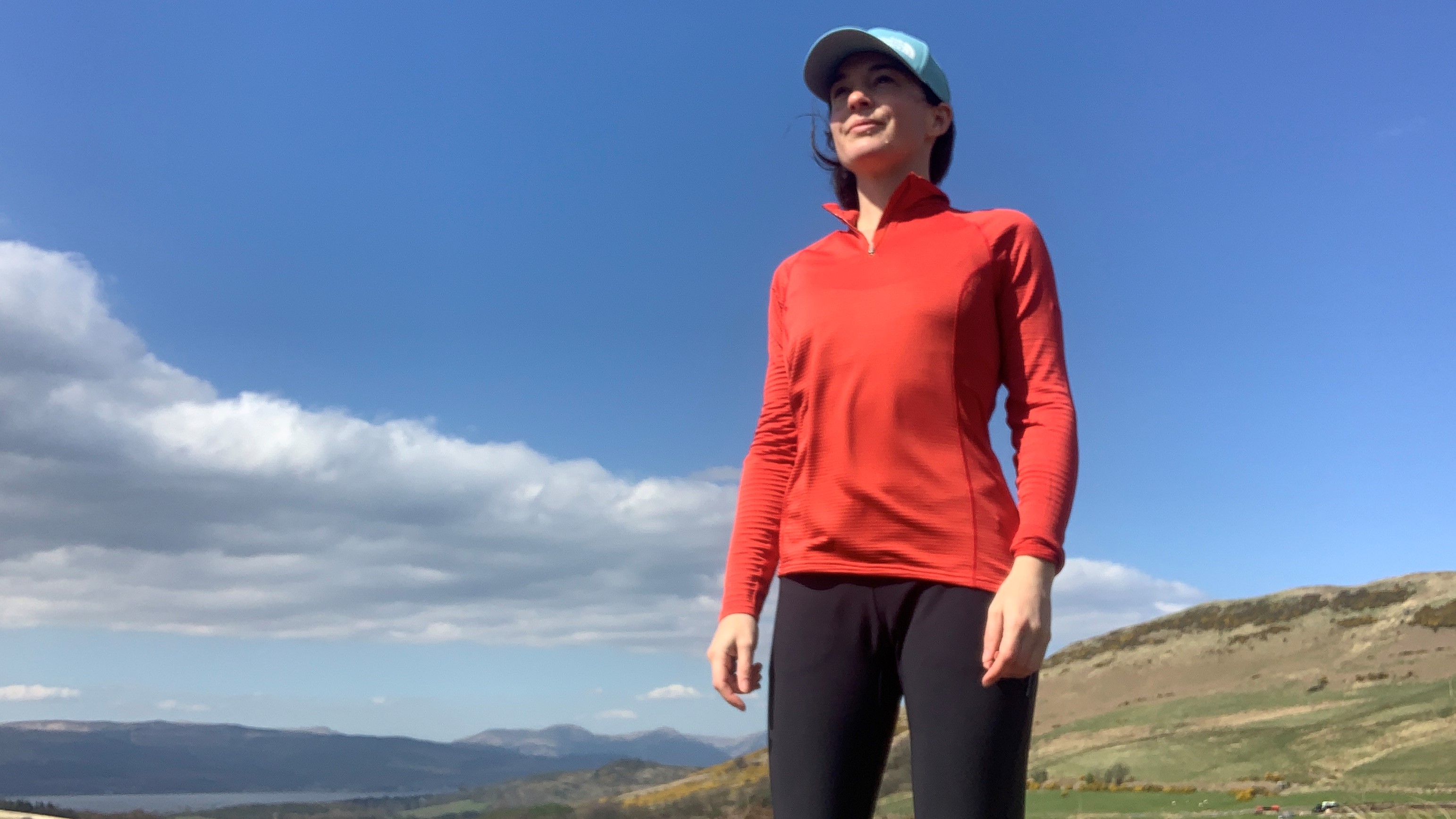What is microfleece?
Learn all about this versatile insulating fabric best suited to high-aerobic cold-weather adventures

For hiking and adventuring in any temperate climate, you’re going to have to think about insulation for at least some of the year. In the colder months, you can create the most effective system of insulation through your hiking layers, but even in the summertime, you’ll want to bring a backup layer for breezy summits or excursions that run late.
A fleece jacket is a quintessential insulating layer for outdoor activities like hiking and winter sports – it’s hard-wearing, quick-drying and breathable – and while you might think of it as just a bulky layer meant for the winter conditions, there’s a more versatile type of fleece known as microfleece that might be better suited to your adventures.
If you’ve seen microfleece on the labels of your outdoor gear and wondered what it actually is, read on to understand its characteristics, how it differs from regular fleece, and when it's better open for you.

What is microfleece?
Microfleece is fleece, pure and simple, but the term is used to describe the thinnest (and therefore lightest) type of fleece you can find. Made from the same polyester material as regular fleece using the same process, the only real difference is that the fibers used to make the fabric are extremely thin.
This makes for a garment that is much sleeker and lighter than your regular, bulky fleece that you might wear around the house or even throw on for a chilly walk. Sometimes, microfleece is used as the lining to a winter jacket, hiking pants or hiking gloves, while you can also find long sleeved tops made entirely using microfleece that’s usually constructed in a grid-like pattern for breathability.
When deciding between regular fleece and microfleece, it’s helpful to understand how this construction determines microfleece’s performance as compared to regular fleece, so read on to get a better understanding of the differences between the two.

What is the difference between microfleece and regular fleece?
Any fleece that is lighter than 200gsm (grams per square meter) is considered a micro fleece. Whereas a regular fleece might be quite bulky and very warm, making a great mid layer or outer layer, a microfleece such as my Montane Protium Lite actually wears more like a base layer.
All the latest inspiration, tips and guides to help you plan your next Advnture!
This makes a microfleece better suited to high aerobic cold weather adventures than a thicker style, because while it still provides some insulation, it is less restrictive and easier to layer, a bit more breathable and better at wicking moisture. For this reason, I like to wear a microfleece for really cold trail runs or steep, fast hikes, but it’s also great as a light outer layer for mild summer hikes, and as a warm layer for active travel. Adventurers who tend to run really hot will probably be much happier wearing a microfleece for frigid adventures.
A microfleece is unlikely to have features such as pockets (though sometimes they do have a chest pocket), or a hood, though there are exceptions to this rule, such as The North Face Bolt Polartec Hooded Jacket. In my experience, when they do come with these features I tend to wish they didn’t as they often just add weight without being very functional due to the thin material. The pockets often just stretch out when loaded up and if it’s cold enough to need a hood, I get more protection from a beanie hat or hooded waterproof jacket.

How warm is microfleece?
Microfleece tops and jackets can be super light, and while they won’t be as warm as a thicker fleece, don’t discount them as insulators. They’ll definitely provide more warmth than a cotton top and might be comparable or even warmer than a wool base layer. Layered over wool and under a shell, you can be pretty comfortable on a cold day in a microfleece.
When should I wear microfleece?
Because microfleece is more breathable than regular fleece, better at moisture management and allows you to move more freely, it’s great for any more dynamic cold weather adventure, be that scrambling, trail running or backcountry skiing. It can be worn as a base layer, with a down jacket and shell over the top, or as a mid layer, with a wool base layer underneath, as long as it’s not too figure-hugging to begin with. And as I’ve already mentioned, it can be a good backup outer layer for cool summer hikes that hardly takes up any room in your backpack.
Julia Clarke is a staff writer for Advnture.com and the author of the book Restorative Yoga for Beginners. She loves to explore mountains on foot, bike, skis and belay and then recover on the the yoga mat. Julia graduated with a degree in journalism in 2004 and spent eight years working as a radio presenter in Kansas City, Vermont, Boston and New York City before discovering the joys of the Rocky Mountains. She then detoured west to Colorado and enjoyed 11 years teaching yoga in Vail before returning to her hometown of Glasgow, Scotland in 2020 to focus on family and writing.

